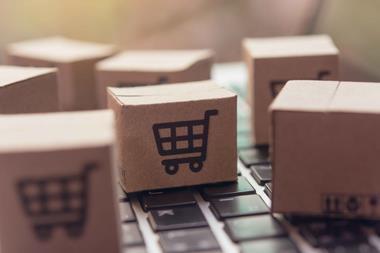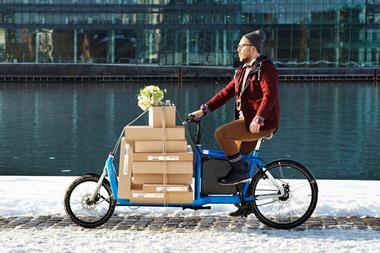New consumer data shows that retailers looking to win in the online space must focus on making things easy for the consumer to win their trust and loyalty.

Research compiled for Retail Week in partnership with nShift found that, among a sample of 1,022 UK online shoppers, the aspect of delivery and returns they place the most value on is convenience.
Being able to choose the time and date of delivery is by far the most important factor for respondents, with nearly two-thirds (63%) deeming this either very important or quite important.
Just 16% say that being able to choose the time and date of delivery is not important to them.
Younger shoppers demand more from their online experience, with 71% of 25- to 34-year-olds saying the ability to choose the date and time of delivery is important, compared with 53% of the 55+ group.
Frequent online shoppers often hold strong opinions about different carriers as well; 34% of respondents say it is important to be able to choose which company delivers their parcel.
Same-day, next-day or next week?
Over the past decade, retailers have striven to overcome operational obstacles to reduce delivery waiting times for consumers, with orders in urban areas fulfilled in as little as 30 minutes from a growing number of businesses.
But are the high costs and logistical challenges of offering same-day delivery worth the pay-off?
Many retailers believe so. The Co-op has partnered with Uber Direct for a 50-store white-label trial that will allow customers to order groceries through its app via the Uber Eats delivery network.
Screwfix has also long put speed and convenience at the heart of its proposition and has expanded its Deliveroo partnership to reach 15 locations since its November 2023 launch.
Even lingerie and sex toy retailer Ann Summers teamed up with Deliveroo for Valentine’s Day 2024 to provide rapid delivery for sexual wellness products.
Is all this worth it, though?
According to our data, same-day delivery is classed as either very important or quite important, by 33% of those surveyed.
Younger shoppers place more value on same-day delivery, with 59% of the 18- to 24-year-olds surveyed choosing this option. However, the data shows the importance of same-day delivery decreases with age.
Surprisingly, next-day delivery is deemed significantly more important than same-day delivery.
Some 54% of those surveyed label next-day delivery as either very or quite important, compared with just 23% who deem it unimportant and another 23% who are indifferent about it.
Click and collect is considered significantly less popular than next-day delivery, but the option is still considered more important than same-day by consumers: 39% say it is important, while 32% say it is unimportant and 27% are indifferent.
Lars Pedersen, chief executive of global delivery and experience management solutions leader nShift, says that too many retailers look at ecommerce delivery as a “purely logistical issue” and so miss the chance to use it to build stronger customer relations.
“Delivery and experience management can improve customer choice, convert more returns into exchanges, build customer loyalty and encourage repeat purchases. All the while, customers can reap the benefits of our investment in innovation in all these areas,” Pedersen says.
“We’re seeing more and more retailers rethinking their approach to deliveries. They’re offering a wider range of delivery options, using more carriers and combining that with a first-class user experience.
“As a result, they are enjoying greater loyalty and faster growth than their competitors.”
Burdening the cost
High delivery costs are the number one reason for customers abandoning online baskets. However, offering these services is incredibly expensive for retailers if some of the cost is not passed on to shoppers.
So, how do consumers feel about delivery fees?
When asked which delivery services they already do or would be willing to pay extra for, 41% of respondents say they would be unwilling to splash out on any.
Despite having less income, younger shoppers are by far the most willing cohort to pay extra for delivery compared with their older counterparts.
Just 10% of 18- to 24-year-olds say they would be unwilling to pay for extra delivery services, compared with 17% of 25- to 34-year-olds, 26% of 35- to 44-year-olds and 49% of 45- to 54-year-olds.
Over-55s (68%) were by far the most averse to spending extra on delivery services.
Meanwhile, 22% of respondents say they would pay extra for a delivery that arrived at a time and date of their choosing.
This option is most popular with the 35- to 44-year-old age group – the demographic often with the tightest schedules due to juggling work, children and wider family commitments.
Delivering goods, delivering loyalty
Despite the costs, the data shows that retailers cannot afford to make any mistakes when it comes to fulfilling deliveries.
Our research finds that most consumers would refuse to shop with a brand again after a single bad delivery experience, with 62% of respondents saying they agree with the statement ‘If I have a bad delivery experience, I wouldn’t use that retailer again,’ while just 12% disagree.
Consumers also do not believe they should pay for returns.
In fact, just 10% of respondents say the statement ‘It’s reasonable to expect to pay a small fee to send things back’ best reflects their attitude to returning things bought online.
Meanwhile, only 8% align with the statement: ‘Returns are fully the responsibility of the customer’.
In an unexpected twist, the youngest shoppers seem more willing to take responsibility for returns than all other age groups: 15% of 18- to 24-year-olds say returns fees are reasonable, while 17% agree that returns are fully the responsibility of the customer.


























1 Reader's comment